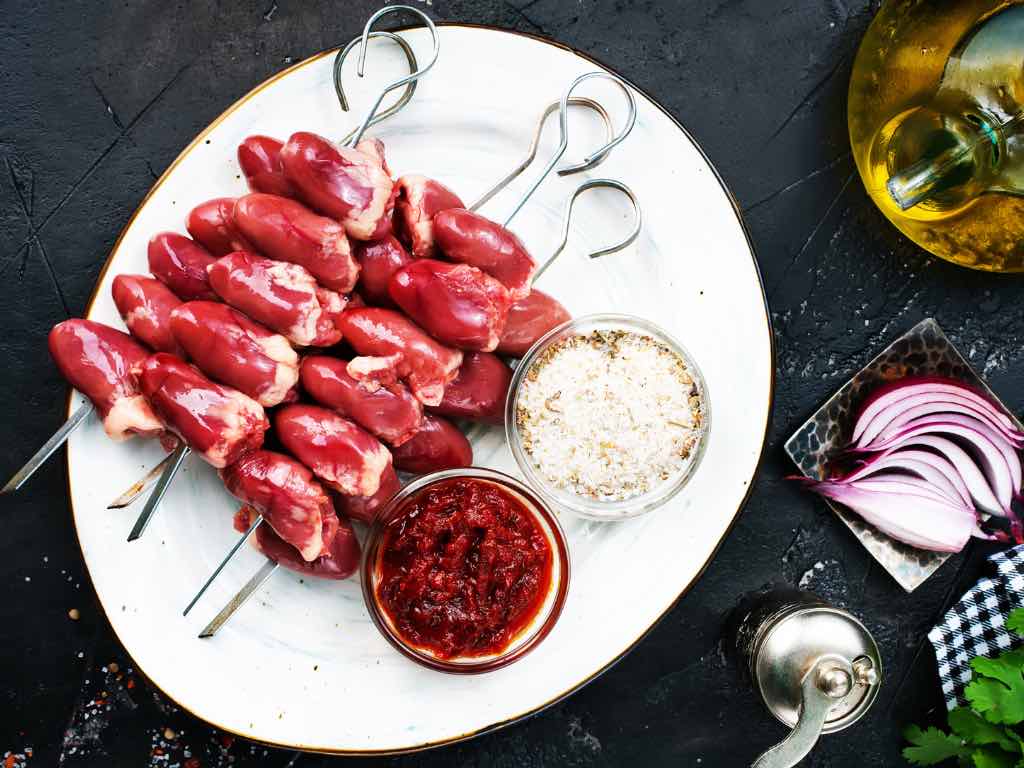
Chicken Hearts: A Nutrient-Packed Culinary Adventure
|
|
Time to read 4 min
Welcome to One Stop Halal!
Written by: Najma A.
|
|
Time to read 4 min
When it comes to nose-to-tail cooking, chicken hearts are an unsung hero that deserves a spot in your culinary repertoire. They are nutrient-dense, flavorful, and surprisingly versatile. If you haven’t explored this unique ingredient yet, prepare to be amazed by its potential to elevate your meals.
Chicken hearts are a lean and nutrient-packed organ meat. They are rich in protein, iron, zinc, and B vitamins, particularly vitamin B12. Incorporating chicken hearts into your diet can support muscle growth, energy production, and immune function.
From a sustainability perspective, using chicken hearts minimizes food waste and supports the ethos of nose-to-tail eating. By embracing this ingredient, you’re expanding your palate and honoring the entire animal.
They have a mild, slightly gamey flavor, making them an excellent introduction to organ meats for beginners. When cooked properly, they are firm yet tender. This balance of flavor and texture allows it to pair beautifully with various spices and sauces.
They are often sold in packages at butcher shops, Asian markets, or specialty grocery stores. Many online retailers also offer fresh or frozen options. When buying chicken hearts, look for ones that are plump, firm, and have a shiny, deep red color. This indicates freshness.
They are easy to prepare, requiring only a few steps to ensure they’re clean and ready for cooking:
Once prepped, they can be marinated, seasoned, or cooked directly, depending on your chosen recipe. Proper preparation ensures the best possible texture and taste, allowing you to make the most of this nutritious and versatile ingredient.
Chicken hearts are incredibly versatile and can be prepared using various cooking methods. Here are some popular options:
Chicken hearts shine in slow-cooked dishes. Add them to stews with root vegetables, broth, and aromatic herbs for a comforting meal.
Quickly stir-fry chicken hearts with soy sauce, ginger, and a medley of fresh vegetables for a nutritious dish.
Coat the hearts in seasoned flour or breadcrumbs and deep-fry until golden and crispy. Serve with your favorite dipping sauce for a crowd-pleasing snack.
Ingredients:
Instructions:
Ingredients:
Instructions:
Eating chicken hearts provides several health benefits:
They are a staple in many cuisines worldwide. In Brazilian churrasco, they are often grilled on skewers and served as a popular street food. In Japan, chicken hearts are a common component of yakitori. Similarly, they’re added to soups, stews, and stir-fries in Southeast Asia.
These global uses highlight the versatility and appeal of chicken heart.
Chicken hearts are gaining recognition as chefs and home cooks seek to reduce food waste and experiment with unique ingredients. They’re budget-friendly, easy to cook, and offer a distinct flavor profile that enhances traditional and contemporary dishes.
Welcome to your favorite butcher shop. We carry custom cuts of beef, chicken, lamb, goat, grass-fed beef, wagyu, deli, and more. We ship across the United States in 1-2 business days.
Chicken hearts are a culinary gem waiting to be discovered. Their rich flavor, tender texture, and chicken heart nutrition benefits make them an excellent addition to any meal. Whether you’re grilling, sautéing, or stewing, chicken hearts offer endless possibilities for delicious and sustainable cooking. Next time you want to try something new, try chicken hearts. You’ll expand your culinary horizons and embrace an ingredient that’s as wholesome as it is flavorful.

© 2025 One Stop Halal, Inc.